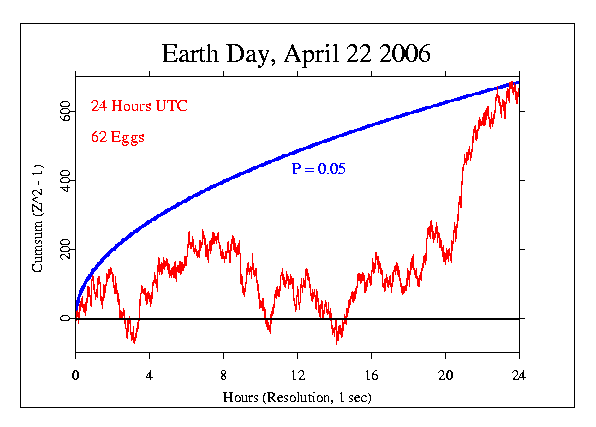|
Earth Day in 2006 is on April 22. This year it was on a Saturday,
and prompted by a note from Vera, I decided to make it a formal
hypothesis test again (last time was in 2001). Since
1970, Earth Day has been an annual event for people around the world to
celebrate the earth and our responsibility toward it. The Earthday
network says, "Volunteer. Go to a festival. Install solar panels on your
roof. Organize an event where you live. Change a habit. Help launch a
community garden. Communicate your priorities to your elected
representatives. The possibilities are endless! Do something nice for
the earth, have fun, meet new people, and make a difference."
Earth Day 2000 -- the 30th anniversary -- was expected to stir 500
million people on all continents and in more than 160 nations. Probably
the expectations in 2006 should be similar. It seems that even the US
government is beginning to see some light, though there continues to be
an obtuse administration response. More broadly there is a growing
recognition that we must pay attention to the earth's needs.
Given the basic character of the Global Consciousness Project, with
purposes that include helping more people recognize that we can have a
better future by becoming more conscious of our interdependence, Earth
Day seems a natural event to examine. Since the Earth Day observances
are very diffuse, with no central, focal moment, we decided that the
most sensible prediction would be to simply expect the whole day to show
the effects of large numbers of separate celebrations, rituals,
meetings, and consciousness raising events. The full 24 hours of data
for 22 April, 2006, based on UTC time, were extracted, and processed as
raw second-by-second composites across all eggs. At the time of
processing (on the 23rd), 62 eggs had reported. The figure below shows
the cumulative deviation for the 24 hour period. The total Chisquare was
87061 on 86400 degrees of freedom, for a p-value of 0.056.
 -->
-->
|